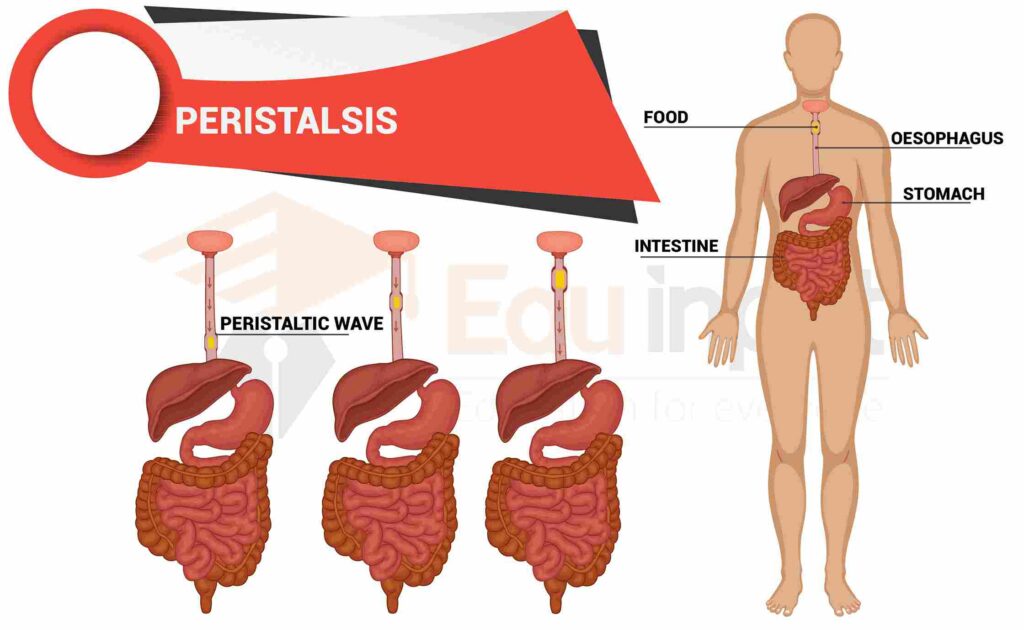Peristalsis- Definition, Types and Mechanism
The wave of contraction of the circular and longitudinal muscle which is preceded by a wave of relaxation to squeeze the food down into the digestive canal is called peristalsis. The food that we eat characteristically passes through our digestive systems.
The act of peristalsis, which is defined as wavelike muscle contractions that push food along the cavity of the digestive canal, propels food from the oral cavity (where it first enters) to the stomach and then through the alimentary canal.
Peristalsis In The Urinary Tract
The movement of peristalsis is not only important for the esophageal and digestive tract, but it also helps to move urine along the urinary tract.
This type of movement is observed in two tubes to bring the liquid from the kidneys up to the bladder. The peristaltic movement then eliminates the liquid from the body through the urethra in the form of urine.

Intestinal Peristalsis
The existence of food particles in the small intestine causes contractions that travel from the restorative point in both directions. This is called intestinal peristalsis.
Antiperistalsis
Peristalsis in the human body is vital for the natural passage of food and liquid from the mouth, through the esophagus, and into the stomach. However, sometimes this movement is reversed. So food may pass from the intestine back into the stomach and even into the mouth. This reverse peristalsis is called antiperistalsis. It leads to vomiting.
Hunger Pang
The hunger contractions are peristaltic. These hunger contractions are caused by low blood glucose levels. When blood sugar levels drop, the body releases hormones that signal the body to start breaking down stored carbohydrates for energy. This can leave you feeling irritable, cranky, and hungry. These contractions can cause an uncomfortable sensation called hunger pang. The sensation of hunger is usually felt 12 to 24 hours after the last meal. There may be less time for some people.

 written by
written by 


Leave a Reply